|
The Blue Fairy Book (Dover Storybooks for Children)
 The Brown Fairy Book
 The Grey Fairy Book
 The Olive Fairy Book
 Passages (Predictable Crises of Adult Life)
 "Observer" on Cricket: An Anthology of the Best Cricket Writing
 The Real Mother Goose
 The Classic Treasury of Silly Poetry
 Goddess: A Celebration in Art and Literature (A Fair Street-Welcome book)
 Read Me a Story, Please - 50 Readaloud Stories Chosen By Wendy Cooling
 The 20th Century Children's Book Treasury: Celebrated Picture Books and Stories to Read Aloud (Treasured Gifts for the Holidays)
 Latino Read-Aloud Stories (Read-Aloud)
 The Red Fairy Book
 The Violet Fairy Book
 The Yellow Fairy Book
 Mirror, Mirror: Forty Folk Tales for Mothers and Daughters to Share
 The Holocaust 3rd Edition Plus Text Letter
 Dungeon, Fire and Sword: The Knights Templar in the Crusades
 The Crimson Fairy Book
 The Lilac Fairy Book
 The Orange Fairy Book
 The Pink Fairy Book
 Maths (Revise AS & A2 (Combined))
 Read-Aloud Poems For Young People (AN INTRODUCTION TO THE MAGIC AND EXCITEMENT OF POETRY)
 The "Times" Killer Su Doku
 Dreaming the Dark: Magic, Sex and Politics
 Truth or Dare: Encounters with Power, Authority and Mystery
 The Pagan Book of Living and Dying: Practical Rituals, Prayers, Blessings and Meditations on Crossing Over
 The Spiral Dance: A Rebirth of the Ancient Religion of the Great Goddess
 SO LONG THANK FISH
 Dirk Gently's Holistic Detective Agency
 Restaurant at the End of the Universe
 Life, the Universe and Everything
 Hitchhiker's Guide to the Galaxy
 LONG DARK TEA TIME OF THE SOUL
 The Salmon of Doubt: Hitchhiking the Galaxy One Last Time
 Additional material includes introductions by Stephen Fry and editor Peter Guzzardi (who stitched together the Salmonfragment from disk drafts), The Guardian's Adams biography, Richard Dawkins' farewell piece, and the order of the memorial service. The non-fiction by the man himself ranges from perhaps a dozen meaty articles and speeches to brief squibs, interview/questionnaire answers and tiny asides like: We are stuck with technology when what we really want is just stuff that works. How do you recognise something that is still technology? A good clue is if it comes with a manual. There are enjoyable pieces on computers (especially), atheism, dogs, manta rays on the Great Barrier Reef, the Save the Rhino stunt climb, and PG Wodehouse. Much of the rest is ephemeral; you can't help reflecting that Adams himself never chose to collect all this lightweight newspaper work. Lovers of his fiction will welcome the Hitch-Hiker-related short stories "The Private Life of Genghis Khan" and "Young Zaphod Plays It Safe", despite the latter's dreadfully dated political punch line. What of The Salmon of Doubtitself, a quarter of this book? There's a glimpse of a far-future estate agent's utopia, a woman asking Dirk Gently to investigate a cat that's literally only half there (his puzzling reluctance to take the case may echo Adams' own feelings about the novel), Gently's capricious trip to America in response to an unknown client's total lack of instructions, the tragic death of a rhino as perceived by the rhino... Many teasing questions; we'll never know the answers. Overall it's a must-have for devoted Adams fans and completists, a likely disappointment (though with pleasant exceptions) for new readers. —David Langford Mostly Harmless
 Anderson's Fairy Tales
 Fairy Tales By Hans Christian Anderson
 Jedi Search (Jedi Academy)
 Dark Apprentice (Jedi Academy)
 Star Wars: Champions of the Force
 Hidden Empire (Saga of Seven Suns (Paperback))
 A Forest of Stars: The Saga of Seven Suns - Book #2 (Saga of Seven Suns)
 A Forest of Stars (Saga of Seven Suns)
 Horizon Storms (Saga of Seven Suns)
 Now it emerges that the hydrogue problem is a very old one, and that humans and Ildirans are minor players——"like field mice on a giant battleground"—in an ancient war of elementals. The awakened hydrogues (Air) are determined to finish the job of wiping out the helpless-seeming forest group-mind (Earth) already introduced in book one, and in this volume the representatives of Fire and Water begin to stir... The slam-bang action follows many characters in many story strands. Independent human Roamers, mining fuel at frightful risk, come into conflict with the desperate League, which also feels forced into brutal oppression of its own colonies. A cruel, illicit Ildiran/human breeding experiment continues in secret. Sinister robots created by a vanished race plot their own enormities, while a matter-transmitter network built by that same race could be the answer to the fuel shortage. Dirty politics and unwilling marriages of convenience abound. Space fleets face impossible odds, whole planets are wrecked, and even suns are now at risk of oblivion. It's all rip-roaring interstellar adventure with megadeaths aplenty, lashings of pyrotechnics, the occasional touch of romance and doom-laden forebodings of worse to come. Stay tuned for more of "The Saga of Seven Suns". —David Langford Scattered Suns
 Of Fire and Night (Saga of Seven Suns 5)
 Metal Swarm (Saga of the Seven Suns 6)
 Green Witchcraft: Folk Magic, Fairy Lore and Herb Craft (Green Witchcraft)
 Celtic Folklore Cooking
 Phule's Company
 Phule's Paradise (Phule's Company)
 A Phule and His Money (Phule's Company)
 Emma
 War Reporting for Cowards: Between Iraq and a Hard Place
 Partnership
 Hello, America
 Just One Pot
 Imajica
 Books of Blood Omnibus: v. 1
 Square Foot Gardening: A New Way to Garden in Less Space with Less Work
 Schaums Outlines: UML
 Programming Pearls
 In his book Bentley assumes little more than a working knowledge of C, but it's in no way a guide to C. Rather, it approaches programming in the same way William Morris approached design—as a creative act founded on knowledge of the craft. From the first essay, Bentley emphasises the importance of accurately defining the problem in arriving at a fast, robust and efficient solution. He gives a number of examples that show how real understanding can reduce programming time, increase accuracy and reduce bugs. The essays are divided into three alliteratively named sections: Preliminaries, Performance and Product. The first section covers writing a program that's correct for the programmer and the client. The second addresses efficiency, code tuning and performance. The last is a little unfocussed, albeit still interesting: it covers sorts, searches and heaps among other subjects. Take note, though: the solutions in the appendices are, in true C fashion, pointers to solutions. Programming Pearls is such a delight, you're likely to find yourself reading it in the bath. —Steve Patient A Compendium of Herbal Magick
 Rethinking Our Classrooms: Teaching for Equity and Justice: 2
 House of the Spirits, The
 Black Hawk Down
 The Mists of Avalon-Trade
 The Forest House
 Lady of Avalon
 Fourth Arm
 The Scions of Shannara (Heritage of Shannara)
 The Elfstones of Shannara (Orbit Books)
 The Sword of Shannara
 Wishsong of Shannara (Orbit Books)
 Wizard at Large (Orbit Books)
 Magic Kingdom for Sale/Sold
 Druid of Shannara (Heritage of Shannara)
 The Elf Queen of Shannara (Heritage of Shannara)
 The Talismans of Shannara (Heritage of Shannara)
 The Voyage of the Jerle Shannara: Ilse Witch Bk. 1 (The Voyage of the Jerle Shannara)
 Fans of Terry Brooks will know precisely what to expect from him: undemanding sword—and—sorcery adventure with touches of the gloomily mysterious and of the more complex emotions. This is Brooks at his best and this novel is the least dependent on earlier models as it becomes clear that in this sequence the relationship between good and evil is more complicated than usual. —Roz Kaveney The Voyage of the Jerle Shannara: Antrax Bk.2 (The Voyage of the Jerle Shannara)
 Brooks' writing is at its most suspenseful here as his characters confront their demons and find their hidden resources. The dark woods and steel corridors in which they find themselves trapped are both powerfully evoked and precise, if standard, metaphors for mental states. Like its predecessor, Ilse Witch, this is a far darker and in some ways more interesting take on the world Brooks has assembled. —Roz Kaveney Morgawr (Voyage of the Jerle Shannara)
 The Ilse Witch, Grianne, has found out that everything she has ever believed, all the reasons for revenge which have led her into evil magic, are a lie—that her mentor the reptilian Morgawr is her enemy—and for much of the book she is in such a state of moral and mental collapse that she has to rely on the mercy of her former enemies and her brother, the young Highlander Bek. As he and the other separated members of his party trek through cold forests and dragon-haunted jungles, they find themselves pursued by the Morgawr's demonic allies—by misguided troops from home and finally by the Morgawr himself with a fleet full of zombie aeronauts. This trilogy is about the best thing Brooks has done because it is, much of the time, far less reliant than he has been on the stock materials of fantasy; the mixture of magic and technology here has sparked in him a real inventiveness that can excite even the jaded reader. —Roz Kaveney Tanequil (High Druid of Shannara S)
 Straken (High Druid of Shannara S)
 Armageddon's Children (Genesis of Shannara)
 The Word and the Void Omnibus
 The Elves of Cintra
 Black Unicorn:a Magic Kingdom of Landover Novel (Orbit Books)
 The Lost Continent: Travels in Small Town America
 With a razor wit and a kind heart, Bryson serves up a colourful tale of boredom, kitsch, and beauty when you least expect it. Gentler elements aside, The Lost Continent is an amusing book. Here's Bryson on the women of his native state: "I will say this, however—and it's a strange, strange thing—the teenaged daughters of these fat women are always utterly delectable ... I don't know what it is that happens to them, but it must be awful to marry one of those nubile cuties knowing that there is a time bomb ticking away in her that will at some unknown date make her bloat out into something huge and grotesque, presumably all of a sudden and without much notice, like a self- inflating raft from which the pin has been yanked." Yes, Bill, but be honest: what do you really think? Notes from a Small Island
 Shadowrun Companion: Beyond the Shadows
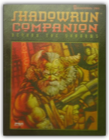 Ancient Ways: Reclaiming the Pagan Tradition (Llewellyn's Practical Magick)
 Pagan Rites of Passage: The Pagan Wheel of Life
 The Magicians' Guild (Black Magician Trilogy)
 The Novice (Black Magician Trilogy)
 The High Lord: The Black Magician Trilogy Book Three
 Priestess of the White (Age of the Five S.)
 Last of the Wilds (Age of the Five)
 Voice of the Gods (Age of the Five)
 Speaker for the Dead (Ender Wiggins Saga)
 Red Prophet (Tales of Alvin Maker)
 Prentice Alvin (Tales of Alvin Maker)
 Xenocide (Ender Wiggins Saga)
 Seventh Son (Tales of Alvin Maker)
 Alvin Journeyman (Tales of Alvin Maker)
 Children of the Mind (Ender Wiggins Saga)
 Ender's Game (Ender Wiggins Saga)
 Heartfire (Tales of Alvin Maker)
 Ender's Shadow
 Shadow of the Hegemon (Ender Wiggins Saga)
 Shadow Puppets
 The Crystal City (Tales of Alvin Maker)
 Carmina Burana.
 The Old Wives' Fairy Tale Book (Pantheon Fairy Tale & Folklore Library)
 The Education of Little Tree (Zia Books)
 More Games for Your Z. X. Spectrum
 Armada
 Marked
 El Otro Arbol De Guernica
 Engaging Children's Minds: A Project Approach
 Papillon
 Banco: The Further Adventures of Papillon
 The Canterbury Tales: In Modern English (Penguin Classics)
 Ecokids: Raising Children Who Care for the Earth
 Executive Orders
 The Bear and the Dragon
 But you bet The Bear and the Dragonis fun—over 1,000 swift pages' worth. In the opening scene, a hand-launched RPG rocket nearly blows up Russia's intelligence chief in his armoured Mercedes, and Ryan's clever spooks report that the guy who got the rocket in his face instead was the hoodlum "Rasputin" Avseyenko, who used to run the KGB's "Sparrow School" of female prostitute spies. Soon after, two apparent assassins are found handcuffed together afloat in St. Petersburg's Neva River, their bloated faces resembling Pokémon toys. The stakes go higher as the mystery deepens: oil and gold are discovered in huge quantities in Siberia, and the evil Chinese Minister Without Portfolio Zhang Han San gazes northward with lust. The laid-off elite of the Soviet Army figure in the brewing troubles, as do the new generation of Tiananmen Square dissidents, Zhang's wily, Danielle Steel-addicted executive secretary Lian Ming, and Chester Nomuri, a hip, Internet-porn-addicted CIA agent posing in China as a Japanese computer salesman. He e-mails his CIA boss, Mary Pat "the Cowgirl" Foley, that he intends to seduce Ming with Dream Angels perfume and scarlet Victoria's Secret lingerie ordered from the catalogue—strictly for God and country, of course. Soon Ming is calling him "Master Sausage" instead of "Comrade," but can anybody master Ming? The plot is over the top, with devastating subplots erupting all over the globe and lurid characters scaring the wits out of each other every few pages, but Clancy finds time to insert hard-boiled little lessons on the vileness of Communism, the infuriating intrusions of the press on presidential power, the sexual perversions of Mao, the poor quality of Russian pistol silencers ("garbage, cans loaded with steel wool that self-destructed after less than ten shots"), the folly of cutting a man's throat with a knife ("they flop around and make noise when you do that"), and similar topics. Naturally, the book bristles like a battlefield with intriguingly intricate military hardware. When you've got a Tom Clancy novel in hand, who needs action movies? —Tim Appelo City of Bones
 City of Ashes
 Anna Banana
 The Call of Service
 Ghost Force: Secret History of the SAS
 Herbal Almanac (Llewellyn's Herbal Almanac)
 Herbal Almanac (Llewellyn's Herbal Almanac)
 Herbal Almanac 2004 (Llewellyn's Herbal Almanac)
 How to Survive Your First Year in Teaching 2nd Edition
 Proteins: Structures and Molecular Properties
 The Lost World
 Encyclopaedia of Magical Herbs (Llewellyn's Sourcebook Series)
 Encyclopaedia of Crystal, Gem and Metal Magic
 Wicca: A Guide for the Solitary Practitioner (Llewellyn's Practical Magick)
 The Complete Book of Incense, Oils and Brews (Llewellyn's Practical Magick)
 Magical Aromatherapy: The Power of Scent (Llewellyn's New Age)
 Living Wicca (Llewellyn's Practical Magick)
 Meat
 Minidictionary of Chemistry
 Clanbook: Lasombra
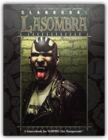 Molecular Cell Biology
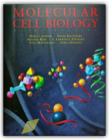 A Guide to Midwifery: Heart and Hands
 Clanbook: Assamite
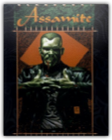 The Ancestor's Tale
 The Ancestor's Taletakes us from our immediate human ancestors back through what he calls `concestors,' those shared with the apes, monkeys and other mammals and other vertebrates and beyond to the dim and distant microbial beginnings of life some 4 billion years ago. It is a remarkable story which is still very much in the process of being uncovered. And, of course from a scientist of Dawkins stature and reputation we get an insider's knowledge of the most up-to-date science and many of those involved in the research. And, as we have come to expect of Dawkins, it is told with a passionate commitment to scientific veracity and a nose for a good story. Dawkins's knowledge of the vast and wonderful sweep of life's diversity is admirable. Not only does it encompass the most interesting living representatives of so many groups of organisms but also the important and informative fossil ones, many of which have only been found in recent years. Dawkins sees his journey with its reverse chronology as `cast in the form of an epic pilgrimage from the present to the past [and] all roads lead to the origin of life.' It is, to my mind, a sensible and perfectly acceptable approach although some might complain about going against the grain of evolution. The great benefit for the general reader is that it begins with the more familiar present and the animals nearest and dearest to us—our immediate human ancestors. And then it delves back into the more remote and less familiar past with its droves of lesser known and extinct fossil forms. The whole pilgrimage is divided into 40 tales, each based around a group of organisms and discusses their role in the overall story. Genetic, morphological and fossil evidence is all taken into account and illustrated with a wealth of photos and drawings of living and fossils forms, evolutionary and distributional charts and maps through time, providing a visual compliment and complement to the text. The design also allows Dawkins to make numerous running comments and characteristic asides. There are also numerous references and a good index.— Douglas Palmer The God Delusion
 The Greatest Show on Earth: The Evidence for Evolution
 "Serenity": Based on the Screenplay by Joss Whedon ("Serenity")
 American Folklore and Legend
 The Black Gryphon (Daw Book Collectors)
 The White Gryphon (Mage Wars)
 The Silver Gryphon (Mage Wars)
 The Princess and the Wizard
 The Wounded Land (The Second Chronicles of Thomas Covenant)
 White Gold Wielder (The Second Chronicles of Thomas Covenant)
 The One Tree (The Second Chronicles of Thomas Covenant)
 The Literary Cat: Quips, Quotes and Observations
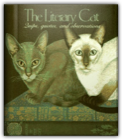 Acka Backa Boo
 Eckert's Animal Physiology
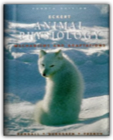 The Never-ending Story (Puffin Books)
 Miro
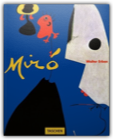 The Land Beyond the Gate
 The Armlet of the Gods
 The Sorceress of Scath
 Circle Round: Raising Children in the Goddess Tradition
 The Spirit Catches You and You Fall Down: a Hmong Child, her American Doctors and the Collision of Two Cultures
 Mr Wolf's Pancakes
 Dark Demon
 The Storytelling Stone: Traditional Native American Myths and Tales
 Glory Lane
 Codgerspace
 Interlopers (Ace Science Fiction)
 Son of Spellsinger
 Spellsinger
 Greenthieves
 Watching the English: The Hidden Rules of English Behaviour
 Supreme Power: 1 (Max)
 Good Omens
 Revision Express English Language and Literature (A Level Revise Guides)
 Spiritual Midwifery
 Spiritual Midwifery
 The Classic Myths in English Literature and in Art
 The Autobiography of Henry VIII: With Notes by His Fool, Will Somers
 Tibor Gergely's Great Big Book of Bedtime Stories
 Federico Garcia Lorca: A Life
 Neuromancer
 Count Zero
 Mona Lisa Overdrive
 Pattern Recognition
 Robin and the King
 Sherwood
 Bad Science
 The Princess Bride: S. Morgenstern's Classic Tale of True Love and High Adventure (A Del Rey Book)
 William Goldman—who—who's won two Oscars for his screenwriting (Butch Cassidy and the Sundance Kidand All the President's Men), and has endeared himself to dentists and their patients planetwide through his novel Marathon Man—has always claimed he merely abridged this text, extracting the "good parts" from an inventive yet wordy classic by Florinese literary superstar, S Morgenstern. It has, however, been whispered in certain circles that Morgenstern himself is a figment of Goldman's ultra-fertile imagination. Read Goldman's original and special Anniversary introductions and make up your own mind. Oh—and don't forget his explanation as to why he's only "abridged" the first chapter of the sequel Buttercup's Baby—which appears here for the first time—and why it took him so long to get round to it. Completely delightful, suitable for cynics and romantics alike. Suspension of disbelief optional. — Lisa Gee The Times Su Doku
 Something from the Nightside
 Agents of Light and Darkness
 Nightingale's Lament: A Novel of the Nightside
 Hex and the City
 Paths Not Taken: A Novel of the Nightside
 Sharper Than a Serpent's Tooth: A Novel of the Nightside (Ace Fantasy Book)
 The Other Boleyn Girl
 So good a job has Ms Gregory done at portraying the Boleyns and Howards as selfish, scheming, treacherous manipulators however, that it becomes increasingly hard to feel empathy for any of them. While Mary is merely hapless, Anne is the most ruthless of them all, so that instead of feeling cheated by knowing the outcome of her story, it only serves to help digest her unpalatable rise. Such a gruesome destiny was never more deserved. Ms Gregory has worked hard at researching her historical references. Daily life at court is described in fascinating detail—from the relentless leisure pursuits, masques and banquets laid on for the easily bored King to the complex hierarchies and machinations of the courtiers. However, the fall of Queen Katherine of Aragon and her only child, the Princess Mary, and the politics of the competing European courts and the break with Rome are seen only as a backdrop to the bawdy goings-on of the Boleyns and their fateful race for the crown. —Carey Green The Queen's Fool
 Mary and Elizabeth, the two young princesses, have a common goal: to be Queen of England. To achieve this, they need both to win the love of the people and learn how to negotiate dangerous political pitfalls. Gregory recreates this era with tremendous colour, and she makes the court an enticing but danger-fraught place. Into this setting comes the eponymous fool, the youthful Hannah, who (despite her air of guileless religiousness) is not naive. She soon finds herself having to deal with the beguiling but treacherous Robert Dudley. Dispatched to report on Princess Mary, Hannah discovers in her a passionate religious conviction (to return England to the rule of Rome and its pope) that will have fatal consequences. From Tolstoy's War and Peace onwards, historical novelists have set fictitious characters among real-life personages with mixed success; the author's creations can often pale beside the historical figures. That is emphatically not the case here, and Gregory ensures that all her characters have a full and teeming life. Expect a major movie: something as colourful and exuberant as The Queen's Fool is a natural for screen adaptation. —Barry Forshaw The Virgin's Lover
 The Constant Princess
 The Boleyn Inheritance
 Tales from Grimm
 The Complete Grimm's Fairy Tales (Pantheon Fairy Tale & Folklore Library)
 Redrobe (Earthlight)
 Effendi: The Second Arabesk
 Pashazade: The First Arabesk
 Set in a mildly different alternate world, Pashazadeis a thriller with a solidly imagined mystery at its core; it is also a novel about a man finally and belatedly growing up. Ashraf's sense of responsibility for an orphaned girl and for the woman with whom he has refused an arranged marriage are part of what makes him admirable; he has learned the hard way not to treat people as disposable. The details of this alternate near future—an Arab world that remained Turkish after a 1914 war that never quite became important, and into which some slick cybertechnology and genetic gadgetry have slotted without changing anything fundamental—are effectively imagined, but never more important than the people. —Roz Kaveney Lucifer's Dragon
 Felaheen (Arabesk)
 Stamping Butterflies (Gollancz)
 9Tail Fox (Gollancz)
 Once and Future King
 The Wizards of Odd: Comic Tales of Fantasy
 Folk and Fairy Tales: An Introductory Anthology
 Mythology (Meridian)
 The Return of the Native (Oxford World's Classics)
 The Top 500 Poems
 Empty Cradle
 The Stone Forest
 The Magical Household (Llewellyn's Practical Magick)
 Dead Until Dark: A Sookie Stackhouse Vampire Mystery
 Definitely Dead
 Dead As A Doornail: A True Blood Novel
 The Silence of the Lambs
 Clarice Starling, a precociously self-disciplined FBI trainee, is dispatched by her boss, Section Chief Jack Crawford, the FBI's most successful tracker of serial killers, to see whether she can learn anything useful from Dr. Hannibal Lecter. Lecter's a gifted psychopath whose nickname is "The Cannibal" because he likes to eat parts of his victims. Isolated by his crimes from all physical contact with the human race, he plays an enigmatic game of "Clue" with Starling, providing her with snippets of data that, if she is smart enough, will lead her to the criminal. Undaunted, she goes where the data takes her. As the tension mounts and the bureaucracy thwarts Starling at every turn, Crawford tells her, "Keep the information and freeze the feelings." Insulted, betrayed, and humiliated, Starling struggles to focus. If she can understand Lecter's final, ambiguous scrawl, she can find the killer. But can she figure it out in time? —Barbara Schlieper The Silence of the Lambs
 Clarice Starling, a precociously self-disciplined FBI trainee, is dispatched by her boss, Section Chief Jack Crawford, the FBI's most successful tracker of serial killers, to see whether she can learn anything useful from Dr. Hannibal Lecter. Lecter's a gifted psychopath whose nickname is "The Cannibal" because he likes to eat parts of his victims. Isolated by his crimes from all physical contact with the human race, he plays an enigmatic game of "Clue" with Starling, providing her with snippets of data that, if she is smart enough, will lead her to the criminal. Undaunted, she goes where the data takes her. As the tension mounts and the bureaucracy thwarts Starling at every turn, Crawford tells her, "Keep the information and freeze the feelings." Insulted, betrayed, and humiliated, Starling struggles to focus. If she can understand Lecter's final, ambiguous scrawl, she can find the killer. But can she figure it out in time? —Barbara Schlieper Red Dragon
 Hannibal
 Stainless Steel Rat Saves the World
 The Stainless Steel Rat Wants You
 The Stainless Steel Rat Gets Drafted (Bantam Spectra Book)
 The Stainless Steel Rat for President
 Stainless Steel Rat Is Born
 The Stainless Steel Rat Sings the Blues (Bantam Spectra Book)
 Adventures of the Stainless Steel Rat
 The Stainless Steel Rat Goes to Hell (Stainless Steel Rat Books)
 The Stainless Steel Rat Joins the Circus (Stainless Steel Rat Books)
 Coyote And... Native American Stories
 Phule Me Twice
 No Phule Like an Old Phule
 Stranger in a Strange Land (Remembering Tomorrow)
 Number of the Beast
 The door into summer
 Glory Road
 PAST THROUGH TOMORROW
 Sixth Column
 Stranger in a Strange Land/30th Anniversary, Uncut Version
 Farnham's Freehold
 The Cat Who Walks Through Walls
 Signal Transduction
 The Quest of a Cursed Kingdom
 Better Angels
 Herbal Almanac 2006 (Llewellyn's Herbal Almanac)
 Essential Genetics
 The Tao of Pooh / the Te of Piglet
 A Druid's Herbal for the Sacred Earth Year
 Duncton Wood
 The Stonor Eagles
 Duncton Quest
 Duncton Found
 Duncton Tales: vol. 1
 Duncton Rising
 Duncton Stone
 Skallagrigg
 The Grimoire: Manual of Practical Thaumaturgy : 2053
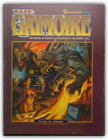 Sword Dancer
 The Lady in the Tower
 Mathematics
 The Great Hunt
 The Eye of the World
 Jordan didn't become a bestselling author merely by mixing up traditional ingredients; a master storyteller, he ingeniously gives unusual twists to these conventional fantasy elements. He also excels in the descriptive and narrative skills needed to create a detailed and coherent imaginary world. The many lands he portrays are vast in scope and contain amazingly varied countries and peoples, while retaining the inner coherence needed to make them satisfying places for a fantasy fan to roam around in. However, Jordan's writing never attains the subtlety or sophistication of, say, George RR Martin and there are some annoying stylistic tics: he seems unable to introduce a female character without commenting on her neckline and thereafter has them forever smoothing their dresses. To his publisher's credit, Jordan's books are fortunate among fantasy novels in not having covers that look like an explosion of a teenager's bedroom. The absence of such lurid artwork is, perhaps, part of their appeal. —David Pickering The Dragon Reborn
 The Shadow Rising
 The Fires of Heaven
 Lord of Chaos
 A Crown of Swords
 The Path of Daggers
 But with the previous book, Crown of Swords, and now with Path of Daggers, the series is in a bit of a holding pattern. Path continues the halting gait of the current plot line: Rand is still on the brink of losing it, all the while juggling the political machinations around him and again taking to the field against the Seanchan. The rest of the Two Rivers kids and company don't seem to be moving much faster. Egwene continues to slowly consolidate her hold as the "true" Amyrlin (finally getting closer to Tar Valon and the inevitable confrontation with Elaida), and Nynaeve and Elayne keep on wandering toward the Lion Throne, again on the run from the Seanchan. Mat Cauthon is barely mentioned and fellow ta'veren Perrin keeps busy with politics in Ghealdan. The ending does provide promise, though, that book nine might match the pace and passion of the previous books. If you're already hooked, you could sooner overcome a Weave of Compulsion than avoid picking up a copy of Path of Daggers. But if you're new to the series, start at the beginning with the engrossing, much-better-paced Eye of the World. —Paul Hughes Winter's Heart
 Crossroads of Twilight
 This is a book with a fair amount of incident, but nothing you could really call a climax. One of Jordan's strengths has always been his ability to send things off at interesting and imaginative tangents, revealing that his is a stranger world than we have begun to know—there is not enough of that here, and rather too much in the way of confrontations and kidnappings and dilemmas of conscience that recapitulate things he has done before. His decent, lumbering "grey" style means that there are no moments when the writing thrills us either—this is a book for those who have committed to Jordan's sequence for the long haul rather than one for new readers to sample. —Roz Kaveney New Spring: A Wheel of Time Prequel
 Knife of Dreams
 The Gathering Storm
 Victimas De La Guerra Civil
 The Star Wars Trilogy: A New Hope/The Empire Strikes Back/Return of the Jedi (Classic Star Wars)
 Return of the Jedi: Novel
 Of course, there is plenty of action, and Kahn handles the main set-pieces well. The struggle above the Sarlacc pit as Han Solo is rescued from Jabba the Hutt, the speeder bike chase amongst the giant trees of Endor, and the final extended battle as it intercuts between the two space fleets, the surface of the forest moon of Endor and Luke's struggle with Darth Vader and the evil Emperor, all of these are fast-paced and evocative, bringing back memories of forgotten visual details from the film. This is an entertaining way to relive the adventure, and provides a fine conclusion to the trilogy. —Elizabeth Sourbut One Hundred and One African-American Read-aloud Stories (Read-aloud)
 Dracula
 501 Spanish Verbs (Barrons)
 Awakenings: New Magic in 2057
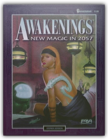 A History of the Holocaust (Single Title Social Studies)
 Weekend Wodehouse (Pimlico)
 The Bachman Books: Four Early Novels by Stephen King : Rage, the Long Walk, Roadwork, the Running Man
 KING STEPHEN : EYES OF THE DRAGON (Signet)
 One on One
 Kim (A Pan Classic)
 Appetites
 The Physics of Star Trek
 Think on These Things
 The Green Fairy Book
 Object Oriented PHP: Concepts, Techniques and Code
 Genes VI
 Don't Read This Book!
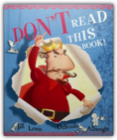 Teaching To Change The World
 Herbal Almanac (Llewellyn's Herbal Almanac)
 White Fang (Puffin Classics)
 The Folklore Calendar (Senate Paperbacks)
 Le Morte D' Arthur
 Minidictionary of Biology
 The ship who sang
 Dragondrums
 Dragonsinger: Harper of Pern
 Get Off the Unicorn
 Dragonsong
 The White Dragon
 Dragonquest
 Dragonflight (Corgi Science-Fiction)
 Dragonsdawn
 The Renegades of Pern
 The Rowan
 All the Weyrs of Pern
 Damia
 Damia's Children
 The Chronicles of Pern: First Fall
 The Girl Who Heard Dragons
 Freedom's Landing (Catteni 1)
 The Ship Who Searched (Baen Science Fiction) (Baen Science Fiction)
 Pegasus in Flight (The Talents of the Earth Series)
 Pegasus in Space (The Talents of Earth)
 The Dinosaur Planet: AND Survivors
 Biology
 The Sabbats: A New Approach to Living the Old Ways (Llewellyn's World Religion and Magick)
 Celtic Myth and Magick: Harness the Power of the Gods and Goddesses (World Religion & Magic)
 Judgement (Odyssey Cycle 3): Odyssey Cycle (Magic the Gathering Novel: Odyssey Cycle)
 Atonement
 Myrren's Gift: The Quickening Book One (Quickening 1)
 Blood and Memory (Quickening Trilogy)
 Bridge of Souls (Quickening Trilogy)
 Immediate Action
 Remote Control
 Crisis Four
 For all McNab's authentic detail—we get lots of information on how to kill people and survive attacks—reading Crisis Fouris a bit like playing Tombraideron the computer. It's a compelling other world, where reality is only paid lip service to, but the action comes so thick and fast that you can't help turning the page. And this is what marks Crisis Fouras a cut above the average thriller. It is an unashamedly blokeish book—you won't find much in the way of subtlety of characterisation—though compared to Dick Francis McNab is positively Henry James—and you have to put up with the odd few pages that read more like instruction manuals for military hardware than narrative, but these are relatively minor quibbles. So many times you get to the end of a thriller only to wonder why on earth you bothered;Crisis Fourdelivers on its promises. —John Crace Firewall
 Dark Winter
 Dark Winterhas the tough (and battered) Nick Stone back in business, still parleying the skills he learnt in the SAS into his new role as a Special Intelligence Service operative. Al-Qaeda are concentrating their forces in south-east Asia (McNab is as topical as ever), and Nick is sent by the CIA to deal with one of Osama bin Laden's most dangerous biochemists. But Nick is given a female partner, and the mission takes unexpected turns. Back in the US, and struggling with the problems of being guardian to an orphaned girl, Nick finds a whole nest of terrorists plotting atrocities in both the US and the UK, and his involvement becomes (against his will) very personal indeed. As always, the mixture here is incandescent, punctuating steadily accelerating narrative trajectory with stunningly orchestrated bursts of action at frequent intervals. McNab's characterisation of anyone other than the resourceful Nick is serviceable rather than detailed, but this is a strategy to ensure that the principal ingredient here—bone-crunching action—is always foregrounded. It may be a while since McNab was an SAS man himself, but the tradecraft is always coolly plausible, and McNab fans can count on getting their money's worth. —Barry Forshaw Bravo Two-Zero
 Immediate Action
 Aggressor
 Successful Teaching Placement: Primary and Early Years (Achieving QTS Practical Handbooks)
 Love is in the Earth : A Kaleidoscope of Crystals
 Love is in the Earth : Mineralogical Pictorial
 Merriam-Webster's Spanish-English Dictionary
 Twilight
 The Innocent Mage (Kingmaker, Kingbreaker)
 The Awakened Mage
 Empress (Godspeaker)
 Hammer of God
 The Riven Kingdom
 The Bible, the Old Testament According to Spike Milligan
 The Accidental Sorcerer
 Witches Incorporated
 Robinson Crusoe
 Sassinak: Planet Pirates v. 1
 This Bridge Called My Back: Writings by Radical Women of Color
 The Modern Witch's Book of Herbs and Healing
 Clark's Law
 Green Witchcraft: Balancing Light and Shadow Vol 2 (Green Witchcraft)
 Green Witchcraft: The Manual Vol 3 (Green Witchcraft)
 Green Magic: The Sacred Connection to Nature
 Grandmothers' Stories: Wise Woman Tales from Many Cultures
 Affluenza: The All-consuming Epidemic (Bk Currents)
 Many books make you think the author has crammed everything they know into a one-hit wonder attempt at knowledge transfer. The feeling you get reading Affluenzais quite different; the authors appear well-read, well-rounded and intelligent, knowledgable beyond the content of their book but smart enough to realise that we need a short, sharp jolt to recognise our current ailment. It's obviously a cliché that money can't buy happiness, but this book will strike a resounding chord with anyone who realises that time is more valuable than toys. Affluenzais a clarion call for those interested in being part of the healing solution. —S Ketchum Diversity and Developmentally Appropriate Practices: Challenges for Early Childhood Education
 The Milagro Beanfield War
 Death of Sleep
 Language Development in Early Childhood
 Priestess of Avalon
 The Lost Boy: A Foster Child's Search for the Love of a Family
 Falls the Shadow
 Sunne in Splendour
 The Reckoning
 Here Be Dragons
 Shadows of the Empire
 First Cadfael Omnibus: "Morbid Taste for Bones", "One Corpse Too Many", "Monks-hood"
 The Second Cadfael Omnibus: "St.Peter's Fair", "Leper of St.Giles", "Virgin in the Ice"
 The Detective Omnibus: "City of Gold and Shadows", "Flight of a Witch" and "Funeral of Figaro"
 Introducing Biochemistry
 Nylon Angel
 Code Noir
 Crash Deluxe: A Parrish Plessis Novel
 Reviving Ophelia: Saving the Selves of Adolescent Girls (Ballantine Reader's Circle)
 Zen and the Art of Motorcycle Maintenance
 Great Big Treasury of BeatrixPotter
 Maskerade
 Hogfather
 This year the Auditors, who want people to stop believing in things that aren't real, have hired an assassin to eliminate the Hogfather. (You know him: red robe, white beard, says, "Ho, ho, ho!") Their evil plot will destroy the Discworld unless someone covers for him. So someone does. Well, at least Death tries. He wears the costume and rides the sleigh drawn by four jolly pigs: Gouger, Tusker, Rooter and Snouter. He even comes down chimneys. But as fans of other Pratchett stories about Death know, he takes things literally. He gives children whatever they wish for and appears in person at Crumley's in The Maul. Fans will welcome back Susan, Death of Rats (the Grim Squeaker), Albert and the wizardly faculty of Unseen University and revel in new personalities like Bilious, the "oh god of Hangovers." But you needn't have read Pratchett before to laugh uproariously and think seriously about the meanings of Christmas. —Nona Vero, Amazon.com Jingo
 Pratchett's characters are both sympathetic and outrageously entertaining, from Captain Carrot, who always finds the best in people and puts it to work playing football, to Sergeant Colon and his sidekick, Corporal Nobbs, who have "an ability to get out of their depth on a wet pavement". Then there is the mysterious D'reg, 71-hour Ahmed. What is his part in all this, and why 71 hours? Anyone who doesn't mind laughing themselves silly at the idiocy of people in general and governments in particular will enjoy Jingo. —Nona Vero The Last Continent (Discworld)
 If you're baffled by all this, no worries, mate. You needn't have read Pratchett before—not even the five previous Discworld novels starring Rincewind (The Colour of Magic, The Light Fantastic, Sourcery, Eric, and Interesting Times)—to enjoy this latest romp. Nor to have visited Australia. When you finish, however, you'll likely want to rush out and do both. —Nona Vero Carpe Jugulum (Discworld Novel)
 The plot is a version of an earlier Discworld novel, Lords and Ladies, with the predatory elves of that novel being replaced here by suave and deadly vampires, and the tiny kingdom of Lancre being defended by its witches. But plot is the least of Pratchett's appeal, and Carpe Jugulum is loaded with marvellous characters (not least the witches themselves, about whom we learn a deal more here), comic touches and scenes of genius, and even some of the renowned down-to-earth Pratchett wisdom (here about the inner ethical conflicts we all face, and the wrongness of treating people as things). Pratchett's vampires are elegant Bela Lugosi types, and they come up against an unlikely but engaging alliance of witches, blue-skinned pixies like Rob Roy Smurfs, a doubting priest with a boil on his face and a magical house-sized Phoenix in a seamless, completely absorbing and feel-good-about-the-universe mixture. Highly recommended. —Adam Roberts Eric: A Discworld Novel (Discworld Novel S.)
 The Fifth Elephant
 Pratchett is always at his best when the comedy is mixed with a real sense of jeopardy that even favourite characters might be hurt if there was a good joke in it. As always the most unlikely things crop up as the subjects of gags—Chekhov, grand opera, the Caine Mutiny—and as always there are remorselessly funny gags about the inevitability of story: "They say that the fifth elephant came screaming and trumpeting through the atmosphere of the young world all those years ago and landed hard enough to split continents and raise mountains. No one actually saw it land, which raised the interesting philosophical question: when millions of tons of angry elephant come spinning through the sky, and there is no one to hear it, does it—philosophically speaking—make a noise? As for the dwarfs, whose legend it is, and who mine a lot deeper than other people, they say that there is a grain of truth in it". All this, the usual guest appearances and Gaspode the Wonder Dog... — Roz Kaveney The Truth (Discworld)
 Thief of Time (Discworld Novel)
 Terry Pratchett's Thief of Time, confronts Discworld and a variety of its defenders with an insidious menace; never before has the phrase "The End of History" had quite so sinister a sound. As always, the sometimes startlingly surrealistically original, sometimes comfortingly groan-worthy, jokes are underlain by some intensely complex ideas and tight plotting. Susan makes a reappearance as one of Pratchett's more interesting heroines; the sinister Lady LeJean is one of Pratchett's most interesting villains, particularly once we learn the answer to the mystery about her. There is an attractive darkness to much of the humour here—Pratchett is often at his best when at his darkest.—Roz Kaveney Night Watch
 Going Postal (Discworld S.)
 Thud! (Discworld S.)
 The Art of Discworld (Gollancz)
 Wintersmith
 The Last Hero
 Nation
 The Discworld Companion
 The Science of Discworld
 The Random House Book of Poetry for Children (Random House Book Of...)
 Microbiology
 Exit to Eden/Movie Tie in
 A-Level Chemistry
 Calculations for A-Level Chemistry - Third Edition
 The children's book of myths and legends
 Dragon Prince
 The Star Scroll (Dragon Prince)
 Sunrunner's Fire (Dragon Prince)
 Ruins of Ambrai
 Ablaze: Story of Chernobyl
 Biohell
 Belinda
 Sword-dancer 2: Sword-singer
 Sword-Sworn: A Novel of Tiger and del
 Sword-Maker/Sword-Breaker
 Science Fiction (New Critical Idiom)
 Sword-breaker
 Sword-born (Sword (DAW Fantasy))
 Kandinsky (The World's Greatest Art)
 Norman Rockwells Counting Book
 Immunology
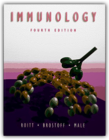 The Tales of Beedle the Bard, Standard Edition
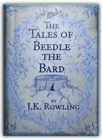 In December 2007, J.K. Rowling unveiled The Tales of Beedle the Bard, a very special book of five fairy tales illustrated by the bard herself, embellished with silver ornaments and mounted moonstones. Amazon was fortunate to come into possession of one of the original copies, and it was our privilege to share images and reviews of this incredible artifact. Now J.K. Rowling is giving millions of Harry Potter fans worldwide cause for celebration with a new edition of The Tales of Beedle the Bard, available December 4, 2008. Offering the trademark wit and imagination familiar to Rowling's legions of readers—as well as Aesop's wisdom and the occasional darkness of the Brothers Grimm—each of these five tales reveals a lesson befitting children and parents alike: the strength gained with a trusted friendship, the redemptive power of love, and the true magic that exists in the hearts of all of us. Rowling's new introduction also comments on the personal lessons she has taken from the Tales, noting that the characters in Beedle's collection "take their fates into their own hands, rather than taking a prolonged nap or waiting for someone to return a lost shoe," and "that magic causes as much trouble as it cures." But the true jewel of this new edition is the enlightening and comprehensive commentary (including extensive footnotes!) by Professor Albus Percival Wulfric Brian Dumbledore, who brings his unique wizard's-eye perspective to the collection. Discovered "among the many papers which Dumbledore left in his will to the Hogwarts Archives," the venerable wizard's ruminations on the Tales allow today's readers to place them in the context of 16th century Muggle society, even allowing that "Beedle was somewhat out of step with his times in preaching a message of brotherly love for Muggles" during the era of witch hunts that would eventually drive the wizarding community into self-imposed exile. In fact, versions of the same stories told in wizarding households would shock many for their uncharitable treatment of their Muggle characters. Professor Dumbledore also includes fascinating historical backstory, including tidbits such as the history and pursuit of magic wands, a brief comment on the Dark Arts and its practitioners, and the struggles with censorship that eventually led "a certain Beatrix Bloxam" to cleanse the Tales of "much of the darker themes that she found distasteful," forever altering the meaning of the stories for their Muggle audience. Dumbledore also allows us a glimpse of his personal relationship to the Tales, remarking that it was through "Babbity Rabbity and Her Cackling Stump" that "many of us [wizards] first discovered that magic could not bring back the dead." Both a wise and delightful addition to the Harry Potter canon, this new translation of The Tales of Beedle the Bard is all that fans could hope for and more—and an essential volume for the libraries of Muggles, wizards, and witches, both young and old. The Children's Voice Campaign The Tales of Beedle the Bard is published by The Children's High Level Group (CHLG), registered charity number 1112575, a charity co-founded in 2005 by J.K. Rowling and Emma Nicholson MEP to make life better for vulnerable children. All net proceeds* from the sale will be donated to The Children's Voice campaign. The Children's Voice campaign is run by CHLG. It campaigns for child rights across Europe, particularly in Eastern Europe where over a million children and teenagers are growing up in institutions, often in unacceptable conditions. In most cases they are without adequate human or emotional contact and stimulation, while many only just survive without life's basics such as adequate shelter and food. CHLG's Children's Voice campaign helps around a quarter of a million children each year through education activities; outreach work in institutions; and a dedicated telephone and email help line. *We estimate that £20 GBP per unit from the sale of the Collector's Edition from Amazon.co.uk will be donated to CHLG. Also Available: The Collector's Edition, Offered Exclusively by Amazon Amazon is thrilled to be the exclusive seller of the Collector's Edition of The Tales of Beedle the Bard featuring an exclusive reproduction of J.K. Rowling's handwritten introduction, 10 new illustrations, metalwork and clasp, replica gemstones, and tucked in its own case disguised as a wizarding textbook from the Hogwarts library. (Available in limited quantities) Standard Edition Product Features: • All five fairy tales from the original The Tales of Beedle the Bard • A new introduction by J.K. Rowling • Illustrations reproduced from the original handcrafted book • Commentary on each of the tales by Professor Albus Dumbledore Amazon Reviews the Original Handcrafted Edition of The Tales of Beedle the Bard The following is Amazon's original December 2007 review. Please note that the review and images below pertain to the handmade book purchased at auction: There is no easy way to define the experience of seeing, holding, or reading J.K. Rowling's The Tales of Beedle the Bard, so let's just start with one word: "Wow." The very fact of its existence (an artifact pulled straight out of a novel) is magical, not to mention the facts that only seven copies exist in all the world and each of the never-before-told tales is handwritten and illustrated by J.K. Rowling herself (and it's quite clear from the first few pages that she has some skill as an artist). Rowling's handwriting is like the familiar scrawl of a favorite aunt—it—it's not hard to read, but it does require attention—allowing you to take it slow and savour the mystery of each next word. So how do you review one of the most remarkable tomes you've ever had the pleasure of opening? You just turn each page and allow yourself to be swept away by each story. You soak up the simple tales that read like Aesop's fables and echo the themes of the series; you follow every dip and curve of Rowling's handwriting and revel in every detail that makes the book unique—a slight darkening of a letter here, a place where the writing nearly runs off the page there. You take all that and you try and bring it to life, knowing that you will never be able to do it justice. With that, let's dig in and begin at the beginning, shall we? —Daphne Durham Caution: the full reviews contain spoilers! Please note that the review and images below pertain to the handmade book purchased at auction in December 2007. "The Wizard and the Hopping Pot" "The Fountain of Fair Fortune" "The Warlock's Hairy Heart" "Babbitty Rabbitty and her Cackling Stump" "The Tale of the Three Brothers" More images from the original handcrafted edition of The Tales of Beedle the Bard Please note that these are images of the handcrafted book purchased at auction in December 2007. Click thumbnails to open full-size images in a new window. See more on our original The Tales of Beedle the Bard pages. The Beedle the Bard Ballad Writing Contest Amazon customers have spoken, and out of thousands of entrants, you have chosen Rhiannon D. of Australia as the winner of the Beedle the Bard Ballad Writing Contest, sending her and a friend on a trip for two to London, England and a weekend with The Tales of Beedle the Bard. See her Grand Prize winning entry, as well as all of the other delightful semifinalist submissions. Magic, Mystery, and Mayhem: A Conversation with J.K. Rowling "I am an extraordinarily lucky person, doing what I love best in the world. I’m sure that I will always be a writer. It was wonderful enough just to be published. The greatest reward is the enthusiasm of the readers." —J.K. Rowling Find out more about Harry's creator in our exclusive interview with J.K. Rowling. Rediscover the Complete Harry Potter Series Harry Potter and the Philosopher's Stone Hardcover Paperback Special Edition Hardcover Harry Potter and the Chamber of Secrets Hardcover Paperback Special Edition Hardcover Harry Potter and the Prisoner of Azkaban Hardcover Paperback Special Edition Hardcover Harry Potter and the Goblet of Fire Hardcover Paperback Special Edition Hardcover Harry Potter and the Order of the Phoenix Hardcover Paperback Special Edition Hardcover Harry Potter and the Half-Blood Prince Hardcover Paperback Special Edition Hardcover Harry Potter and the Deathly Hallows Hardcover Paperback Special Edition Hardcover Why We Love Harry: Our Favorite Moments from the Series There are plenty of reasons to love Rowling's wildly popular series—no doubt you have several dozen of your own. Our list features favorite moments, characters, and artifacts from the first five books. Keep in mind that this list is by no means exhaustive (what we love about Harry could fill ten books!) and does not include any of the spectacular revelatory moments that would spoil the books for those (few) who have not read them. Enjoy. Harry Potter and the Philosopher's Stone * Harry's first trip to the zoo with the Dursleys, when a boa constrictor winks at him. * When the Dursleys' house is suddenly besieged by letters for Harry from Hogwarts. Readers learn how much the Dursleys have been keeping from Harry. Rowling does a wonderful job in displaying the lengths to which Uncle Vernon will go to deny that magic exists. * Harry's first visit to Diagon Alley with Hagrid. Full of curiosities and rich with magic and marvel, Harry's first trip includes a trip to Gringotts and Ollivanders, where Harry gets his wand (holly and phoenix feather) and discovers yet another connection to He-Who-Must-No-Be-Named. This moment is the reader's first full introduction to Rowling's world of witchcraft and wizards. * Harry's experience with the Sorting Hat. Harry Potter and the Chamber of Secrets * The de-gnoming of the Weasleys' garden. Harry discovers that even wizards have chores—gnomes must be grabbed (ignoring angry protests "Gerroff me! Gerroff me!"), swung about (to make them too dizzy to come back), and tossed out of the garden—this delightful scene highlights Rowling's clever and witty genius. * Harry's first experience with a Howler, sent to Ron by his mother. * The Dueling Club battle between Harry and Malfoy. Gilderoy Lockhart starts the Dueling Club to help students practice spells on each other, but he is not prepared for the intensity of the animosity between Harry and Draco. Since they are still young, their minibattle is innocent enough, including tickling and dancing charms. Harry Potter and the Prisoner of Azkaban * Ron's attempt to use a telephone to call Harry at the Dursleys'. * Harry's first encounter with a Dementor on the train (and just about any other encounter with Dementors). Harry's brush with the Dementors is terrifying and prepares Potter fans for a darker, scarier book. * Harry, Ron, and Hermione's behavior in Professor Trelawney's Divination class. Some of the best moments in Rowling's books occur when she reminds us that the wizards-in-training at Hogwarts are, after all, just children. Clearly, even at a school of witchcraft and wizardry, classes can be boring and seem pointless to children. * The Boggart lesson in Professor Lupin's classroom. * Harry, Ron, and Hermione's knock-down confrontation with Snape. Harry Potter and the Goblet of Fire * Hermione's disgust at the reception for the veela (Bulgarian National Team Mascots) at the Quidditch World Cup. Rowling's fourth book addresses issues about growing up—the dynamic between the boys and girls at Hogwarts starts to change. Nowhere is this more plain than the hilarious scene in which magical cheerleaders nearly convince Harry and Ron to jump from the stands to impress them. * Viktor Krum's crush on Hermione—and Ron's objection to it. * Malfoy's "Potter Stinks" badge. * Hermione's creation of S.P.E.W., the intolerant bigotry of the Death Eaters, and the danger of the Triwizard Tournament. Add in the changing dynamics between girls and boys at Hogwarts, and suddenly Rowling's fourth book has a weight and seriousness not as present in early books in the series. Candy and tickle spells are left behind as the students tackle darker, more serious issues and take on larger responsibilities, including the knowledge of illegal curses. Harry Potter and the Order of the Phoenix * Harry's outburst to his friends at No. 12 Grimmauld Place. A combination of frustration over being kept in the dark and fear that he will be expelled fuels much of Harry's anger, and it all comes out at once, directly aimed at Ron and Hermione. Rowling perfectly portrays Harry's frustration at being too old to shirk responsibility, but too young to be accepted as part of the fight that he knows is coming. * Harry's detention with Professor Umbridge. Rowling shows her darker side, leading readers to believe that Hogwarts is no longer a safe haven for young wizards. Dolores represents a bureaucratic tyrant capable of real evil, and Harry is forced to endure their private battle of wills alone. * Harry and Cho's painfully awkward interactions. Rowling clearly remembers what it was like to be a teenager. * Harry's Occlumency lessons with Snape. * Dumbledore's confession to Harry. Harry Potter and the Half-Blood Prince * The introduction of the Horcrux. * Molly Weasley asking Arthur Weasley about his "dearest ambition. "Rowling has always been great at revealing little intriguing bits about her characters at a time, and Arthur’s answer "to find out how airplanes stay up" reminds us about his obsession with Muggles. * Harry's private lessons with Dumbledore, and more time spent with the fascinating and dangerous pensieve, arguably one of Rowling’s most ingenious inventions. * Fred and George Weasley’s Joke Shop, and the slogan: "Why Are You Worrying About You-Know-Who? You Should Be Worrying About U-NO-POO—the Constipation Sensation That's Gripping the Nation!" * Luna's Quidditch commentary. Rowling created scores of Luna Lovegood fans with hilarious and bizarre commentary from the most unlikely Quidditch commentator. * The effects of Felix Felicis. Harry Potter and the Deathly Hallows * The revelation of Snape's nature (especially Snape's Patronus and the emotion behind it). It serves as a reminder that it is love (requited or not) in all its forms that drives many of our actions. * Harry asking if the conversation with Dumbledore was real or happening in his head, and Dumbledore responding "Of course it is happening inside your head, Harry, but why on earth should that mean that it is not real?" * Ron gifting Harry a book on dating witches, a subtle reminder that they are still teens, after all. Visit the Harry Potter Store Can't get enough of Harry, Ron, and Hermione? Our Harry Potter Store features all things Harry, including books, audio CDs and cassettes, DVDs, soundtracks, games, and more. London
 Stand by, Stand by
 Zero Option
 The Kremlin Device
 Tenth Man Down
 In the fifth episode, Tenth Man Down, Sharp finds himself on his toughest assignment yet: to reclaim a lucrative African diamond mine held by Kamangan rebels and escape the evil spell of a Sin'ganga or witch doctor. To make matters worse, as Sharp and his men move in, they discover the rebels are being supported by ex-US Navy SEAL mercenaries. As they try and uncover the hidden agenda, Sharp is taken prisoner with comrade-in-arms, Whinger. In line with the Sin'ganga's predictions, Whinger is brutally slaughtered, leaving Sharp to break the conspiracy and reunite with his team alone. Ryan's mean, lean, fast-moving prose is filled with colourful military descriptors and salute- inducing narrative: "I wanted to introduce him to Pen-y-Fen, the mountain whose silhouette is supposed to be graven on every Special Forces man's heart." And for those not familiar with military jargon and the Kamangan dialect, there's also a glossary to guide you through thorny verbiage. Akin to reading a solider's diary, the action in The Tenth Man Down is gritty, straightforward and believable. —Susan Queue The Hit List
 Esperanza Rising
 Richard Scarry's Best Storybook Ever
 Love, Splat
 The Complete Works (The Oxford Shakespeare)
 Hamlet (Penguin Shakespeare)
 Where the Sidewalk Ends
 Witchcraft in the South-west: Spanish and Indian Supernaturalism on the Rio Grande
 The Folklore of Discworld: Legends, myths and customs from the Discworld with helpful hints from planet Earth
 Sabre Squadron
 All Necessary Measures
 The Complete Maus: No 1
 Deculturalization and the Struggle for Equality: Brief History of the Education of Dominated Cultures in the United States
 Outrageous Acts and Everyday Rebellions: Second Edition (Owlet Book)
 Moving Beyond Words: Breaking the Boundaries of Gender
 Snow Crash
 The Diamond Age: Or, a Young Lady's Illustrated Primer
 The Difference Engine (Gollancz)
 Uncle Tom's Cabin: Or, Life Among the Lowly (American Library)
 Britain Yesterday & Today
 Computer Networks
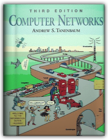 But Computer Networks isn't without its faults—an eternity in Internet time has elapsed since publication and the book is a little stale as a result. It's also very much a textbook and its layout looks very dated and scholarly—for example, each chapter concludes with a mass of sample questions. Oft found in countless bibliographies and on the recommended reading list for IT and networking students, Computer Networks is nevertheless an excellent textbook and a good reference book. It's also one of the best-written and easy to read technical books around. For the IT student and networking professionals alike, it's probably essential reading. If you can afford only one networking book, this is the one you should get. —Roger Gann Modern Operating Systems
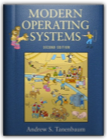 Readers familiar with Tanenbaum's previous text, Operating Systems, know the author is a great proponent of simple design and hands-on experimentation. His earlier book came bundled with the source code for an operating system called Minux, a simple variant of Unix and the platform used by Linus Torvalds to develop Linux. Although this book does not come with any source code, he illustrates many of his points with code fragments (C, usually with Unix system calls). The first half of Modern Operating Systems focuses on traditional operating systems concepts: processes, deadlocks, memory management, I/O, and file systems. There is nothing ground-breaking in these early chapters, but all topics are well covered, each including sections on current research and a set of student problems. It is the second half of the book that differentiates itself from older operating systems texts. Here, each chapter describes an element of what constitutes a modern operating system—awareness of multimedia applications, multiple processors, computer networks, and a high level of security. The chapter on multimedia functionality focuses on such features as handling massive files and providing video-on-demand. Included in the discussion on multiprocessor platforms are clustered computers and distributed computing. Finally, the importance of security is discussed—a lively enumeration of the scores of ways operating systems can be vulnerable to attack, from password security to computer viruses and Internet worms. Included at the end of the book are case studies of two popular operating systems: Unix/Linux and Windows 2000. There is a bias toward the Unix/Linux approach, not surprising given the author's experience and academic bent, but this bias does not detract from Tanenbaum's analysis. Both operating systems are dissected, describing how each implements processes, file systems, memory management, and other operating system fundamentals. Tanenbaum's mantra is a simple, accessible operating system design. Given that modern operating systems have extensive features, he is forced to reconcile physical size with simplicity. Towards this end, he makes frequent references to the Frederick Brooks classic The Mythical Man Month for wisdom on managing large, complex software development projects. He finds both Windows 2000 and Unix/Linux guilty of being too complicated—with a particular skewering of Windows 2000 and its "mammoth Win32 API". A primary culprit is the attempt to make operating systems more "user-friendly," which Tanenbaum views as an excuse for bloated code. The solution is to have smart people, the smallest possible team, and well-defined interactions between various operating systems components. Future operating system design will benefit if the advice in this book is taken to heart. —Pete Ostenson A Kitchen Witch's Cookbook
 A Witch's Beverages and Brews
 O-Zone
 Walden: Or, Life in the Woods (Dover Thrift)
 "Babylon 5": Accusations
 The Simarillion
 The Fellowship of the Ring (Lord of the Rings Vol.1)
 Lord of the Rings: The Return of the King v. 3
 Lord of the Rings: The Two Towers v. 2
 The Two Towers: The Lord of the Rings—Part Two (Lord of the Rings)
 Unfinished Tales of Numenor and Middle-Earth
 The Fellowship of the Ring: The Lord of the Rings—Part One (Lord of the Rings)
 The Return of the King: The Lord of the Rings—Part Three (Lord of the Rings)
 Star Wars: The Truce at Bakura v. 4 (Star Wars)
 One Hundred and One Read-aloud Celtic Myths and Legends (Read-aloud)
 Cat's Cradle
 "Babylon 5": Voices
 "Babylon 5": Blood Oath
 Vox New College Spanish and English Dictionary (Vox Dictionary)
 Basic Genetics
 Basic Genetics
 The Way of Shadows
 Shadow's Edge
 Beyond the Shadows
 Shadowrun
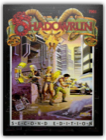 Why I Live at the P.O.
 The Real Witches' Kitchen: Spells, Recipes, Oils, Lotions and Potions from the Witches' Hearth
 The Cats of Seroster (Piccolo Books)
 The Magician's Companion: A Practical and Encyclopedic Guide to Magical and Religious Symbolism (Llewellyn's Sourcebook)
 The Book of Merlyn
 Ancient Legends of Ireland
 SHORT STORIES OF OSCAR WILDE Collector's Library of Famous Editions (Leather Bound)
 The Stone of Farewell (Memory, Sorrow, & Thorn)
 To Green Angel Tower (I): Volume 1 (Memory, Sorrow, & Thorn)
 To Green Angel Tower: Part 2 (Memory, Sorrow, & Thorn)
 The Dragonbone Chair (Memory, Sorrow, & Thorn)
 A Streetcar Named Desire and Other Plays: "Sweet Bird of Youth";"The Glass Menagerie" (Penguin Modern Classics)
 Freehold
 Ziggy's Little Book of Thrills
 The Pothunters
 The Gold Bat and Other School Stories
 The Jeeves Omnibus: No. 2
 The Masquerade
 Favorite Folktales from Around the World (The Pantheon Fairy Tale & Folklore Library)
 Star Wars: Heir to the Empire v. 1 (Star Wars)
 Star Wars: Dark Force Rising v. 2
 Star Wars: The Last Command v. 3 (Star Wars)
 Don Juan Tenorio
 |


Azrael
Collection Total:
513 Items
513 Items
Last Updated:
Jan 9, 2010
Jan 9, 2010
 Made with Delicious Library
Made with Delicious Library